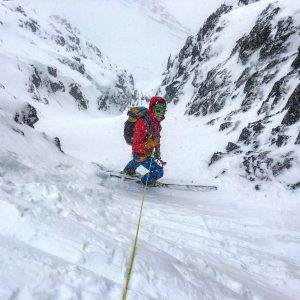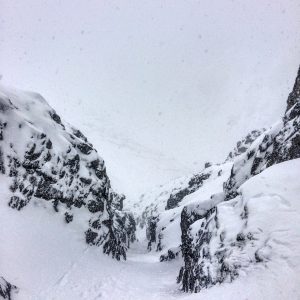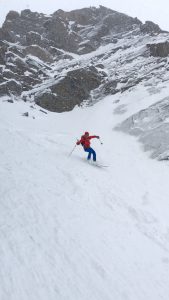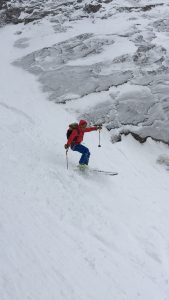Skiing is dangerous, and backcountry skiing is even more dangerous. Extreme steep skiing involving alpine climbing involves consequences that include serious injury and death. Objective hazards (e.g. avalanche danger and rock fall) may be present, and the consequences of a fall or other subjective (e.g. decision-making) mistakes could be fatal. You are responsible for your own safety. The decision to pursue an objective like what’s discussed below cannot be taken lightly; it takes years of gaining knowledge and experience to pull it off.
I once read an article about ski mountaineering featuring Andrew McLean, in which the renowned ski mountaineer commented (paraphrased) that in order to find and ski new couloirs one has to travel to exotic places. I think he meant places like Greenland or Wrangell St. Elias National Park and Preserve in Alaska (e.g. “The Slotterhouse”); those really far-out and expensive “exotic” places. Maybe he just passes through Anchorage en route to more exotic places in Alaska, and just hasn’t taken the time to explore the Western Chugach? Or, maybe, the greater Anchorage area does qualify as exotic? The ski scene here definitely qualifies as neurotic, but I hadn’t really thought of it as exotic. Regardless, (and thankfully, because my dirtbaggery has no budget for that truer “exotic”) the Tao of Randoism keeps leading me to new couloirs and there are countless new ones left out there (and I’m talking continuous lines – not those that require exposure and rappels).
I would hardly consider the Eagle Lake couloirs to be exotic (one can see them from the popular South Fork Eagle River trailhead that’s on the edge of a large neighborhood) but, as far as I know, they hadn’t been skied prior to March of 2016. Maybe it’s because they require a five mile approach from the trailhead, in an area with a generally thinner and more complex snowpack that lacks a formal avalanche program (besides the grassroots program provided by the Anchorage Avalanche Center), that can be difficult to catch when it’s good. Maybe because they’re the epitome of “pinner” and from the trailhead look like they may not even be continuous or “wide enough” to ski. Maybe because a lot of snow snobs simply scoff at the idea of skiing the (often windswept) Western Chugach. Whatever! The Western Chugach offers world-class ski mountaineering opportunities, that can be done on a dirtbag budget, with the amenities of a city nearby…albeit with a difficult entrance exam: a high level of fitness for the long approaches and acuity in regard to avalanche assessment and technical backcountry travel skills.
Over the course of several years skiing with Randoman Brian Harder (SkiMoLife.com), he’s learned to trust my judgement when it comes to adventure skiing. Most of the time, he’s handsomely rewarded. Such was the case with our discovery of the goodness the Eagle Lake couloirs hold. I’ve been back to this zone about four times now, and it’s really incredible. As you can see from the map, there is a low angle skintrack route all the way up the backside of the couloirs. During our second season (2017) of skiing these lines, during which they had a thinner upper elevation snowpack, we installed a rappel anchor above the chockstone boulder in the West Eagle Lake Couloir (it was filled in and ski-able, although only about 190cm wide, in 2016).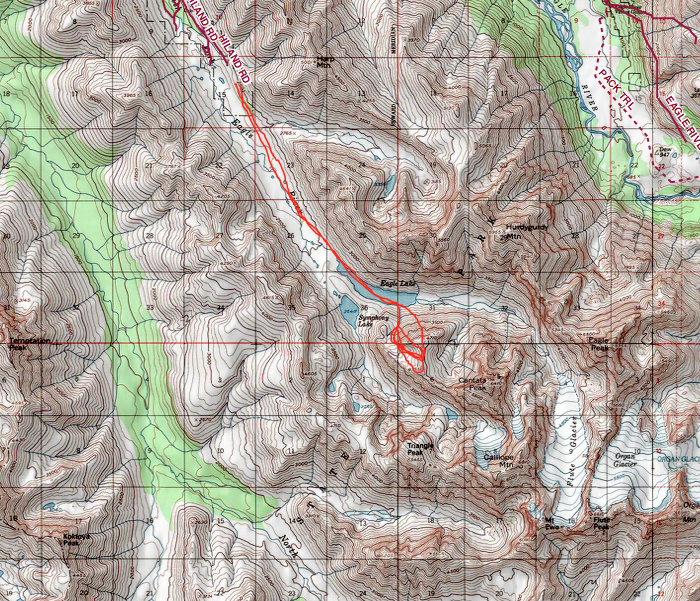
The Eagle Lake couloirs (east couloir on the left, west couloir on the right):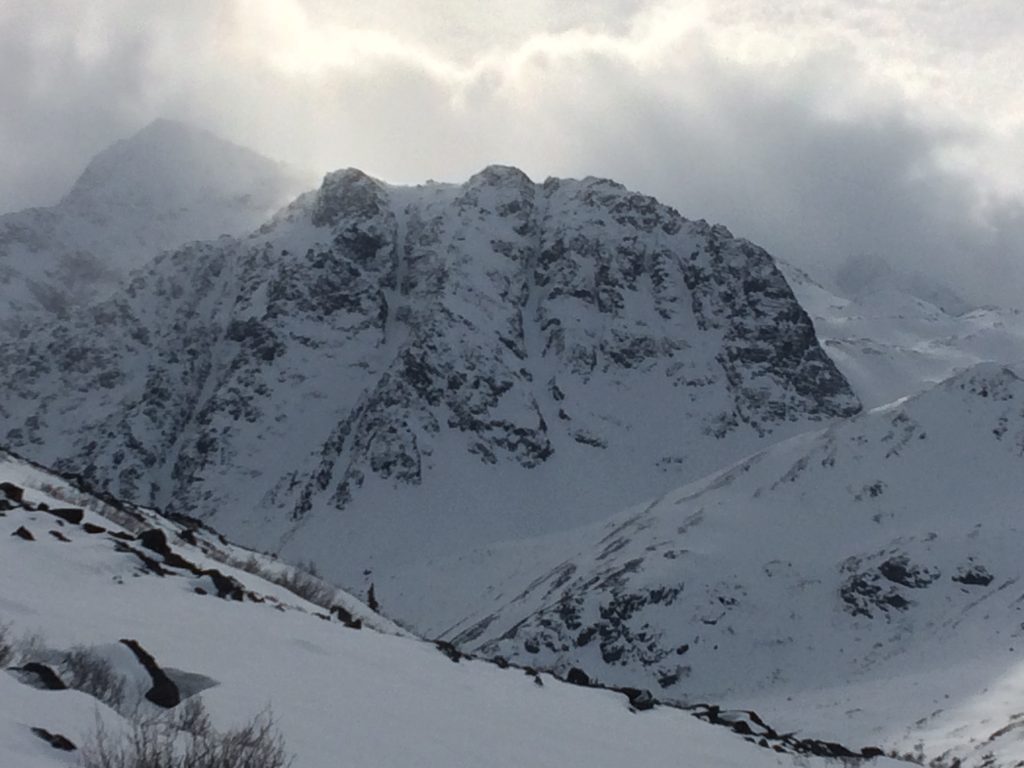
The first time (March 2016) Randoman and I headed back to check out these lines, we didn’t really know if they “went.” We also weren’t aware of the mellow, skin-able route up the backside. We headed up the west couloir first, and even by the time we were “walled-in” still didn’t know if the couloir went. We just headed up. About 3/4 of the way up there is either a narrow choke or an overhanging chockstone boulder. In 2016 we made it through what was a ~190cm choke without issue and only had to deal with a bit of scrambling to top out the line: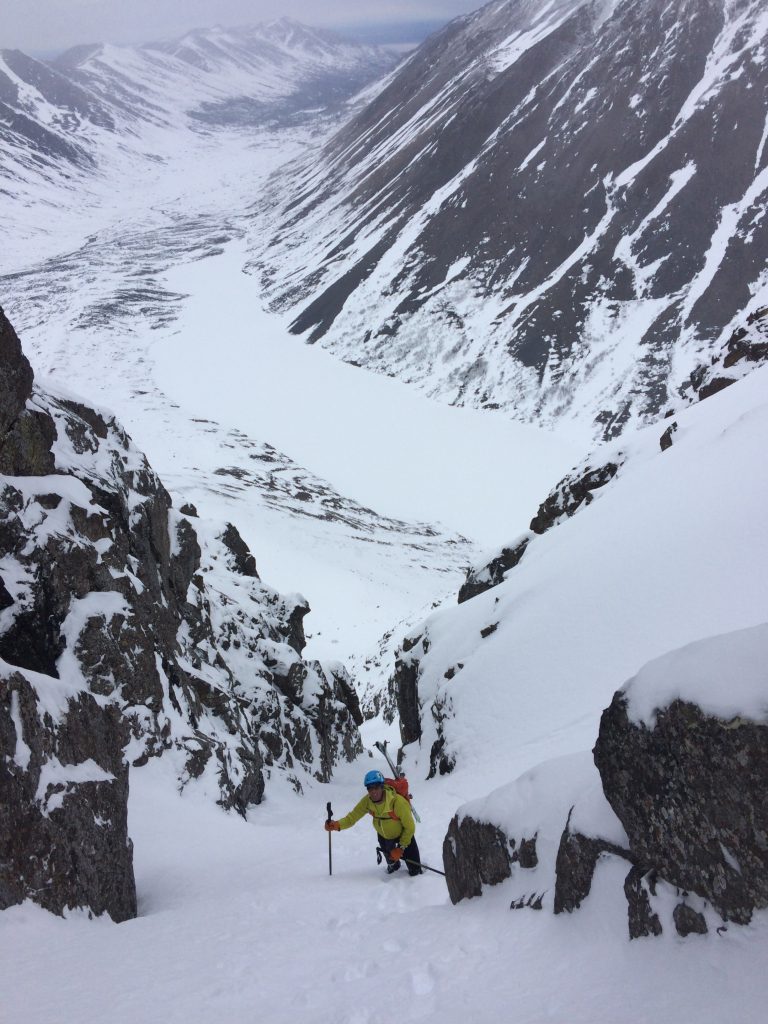
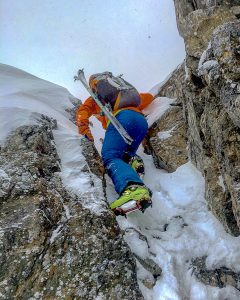
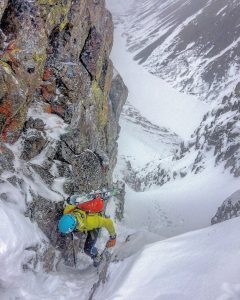
As we hugged the rock wall on the way up (and topped out via the rock scramble) rather than exposing ourselves to the more open but loaded skier’s entrance, we cautiously tip-toed into that loaded entrance with the first skier on belay:
In 2016, with the chockstone filled in and after I had been belayed into and ski cut the upper portion, Randoman styled the descent (while making his usual fashion statement):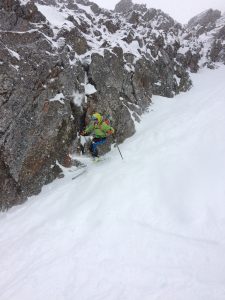
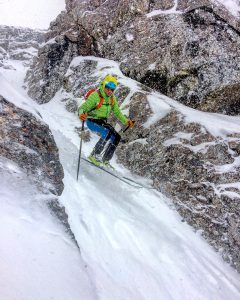
The ambiance of the line is suberb:
About a year later (April 2017), we returned to this sacred temple of Randoism. However, our first trip only had us skiing the east couloir (it has no narrow chokes that could entail exposure on thinner years) as we were shutdown in the west couloir by crotch deep trenching at the bottom and (having circled around for the mellow skintrack route up the backside) the exposed chockstone from the top down; we didn’t have rappel gear since we didn’t think we’d need it based on 2016 conditions. We returned a few weeks later via the backside, skintrack approach and installed an anchor: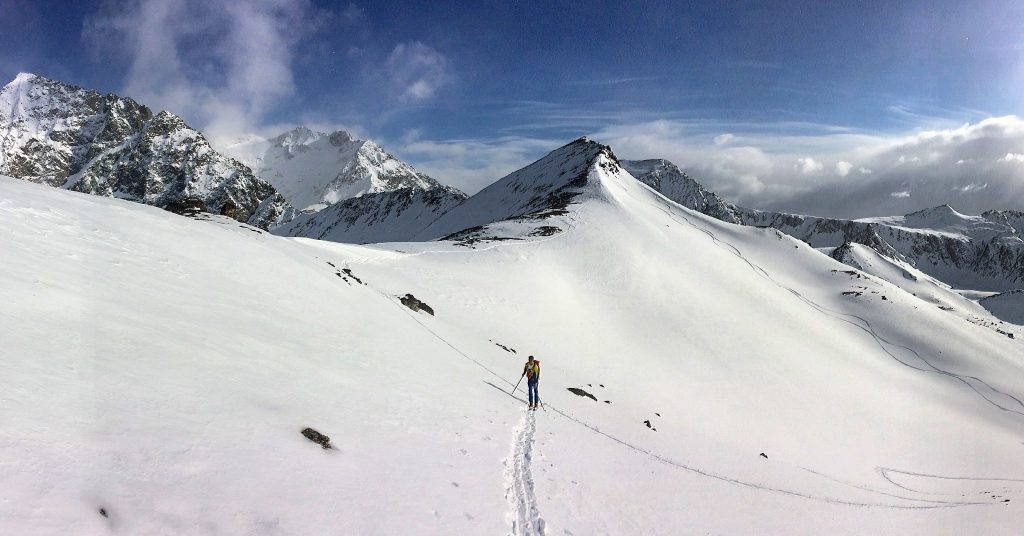
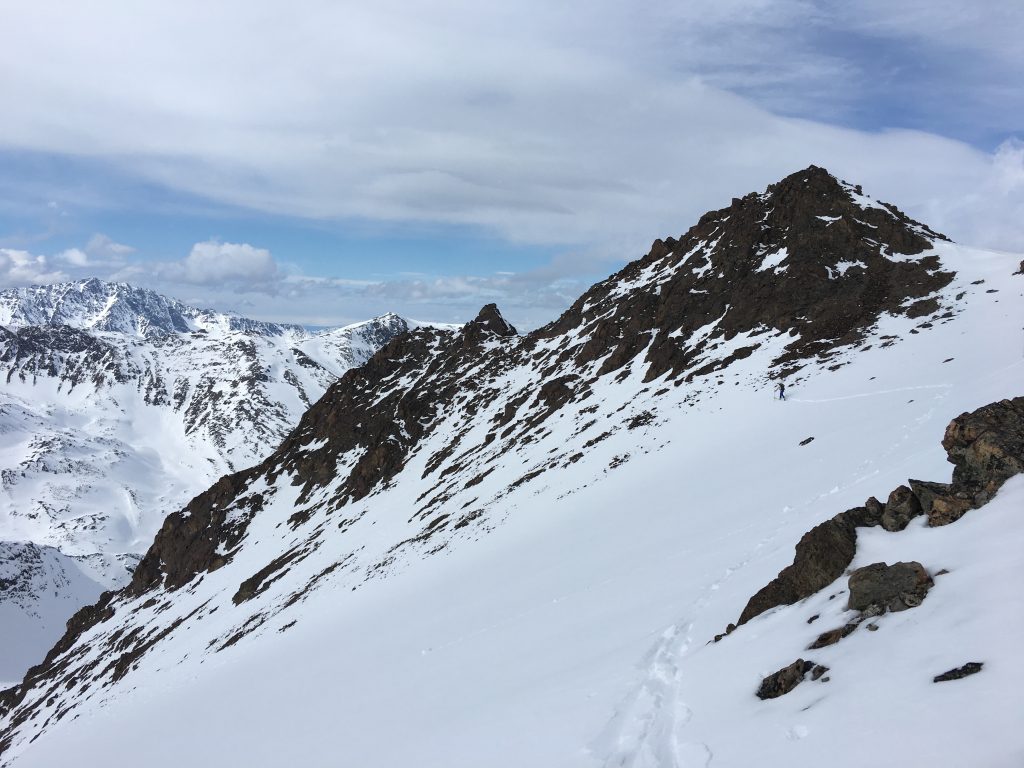
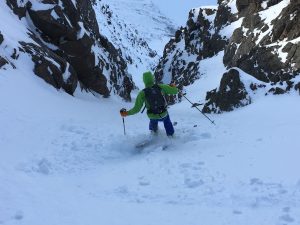
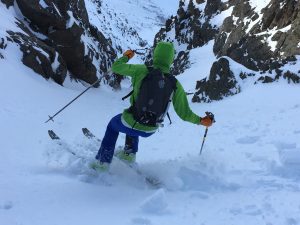
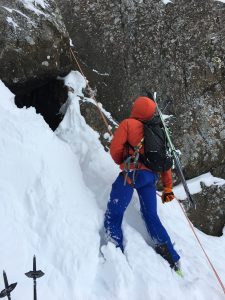
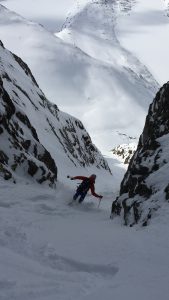
Here’s a video (originally prepared for a 2018 Mountaineering Club of Alaska presentation on Ski Alpinism in the Western Chugach) from our second trip to the zone in 2017, during which we installed the rappel anchor:
If you’re interested in the practice of Randoism, and are an aspiring Randoist, SkiMo Co is likely the best one-stop shop for the gear and attire you need. See our other trip reports for a list of gear we typically use on adventures like this. Most importantly, don’t underestimate the risk and consequences associated with such endeavors. As important, don’t underestimate the fitness and skill at technical backcountry travel and avalanche assessment that you’ll need to pull off a trip like this without incident.

